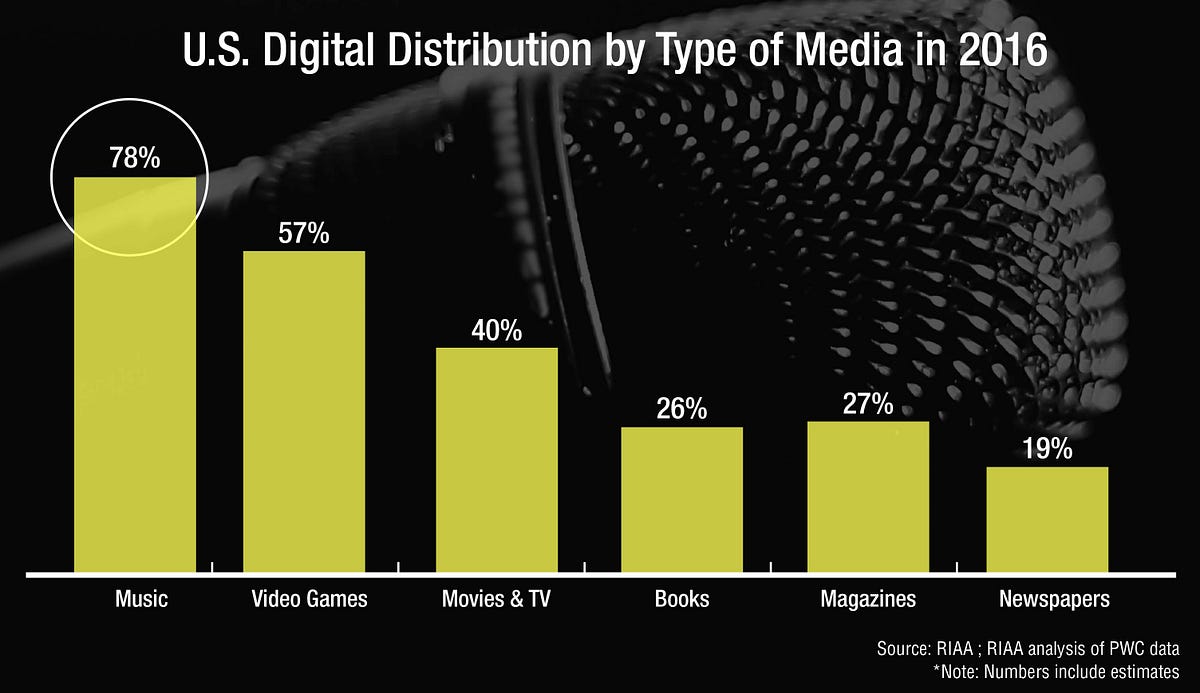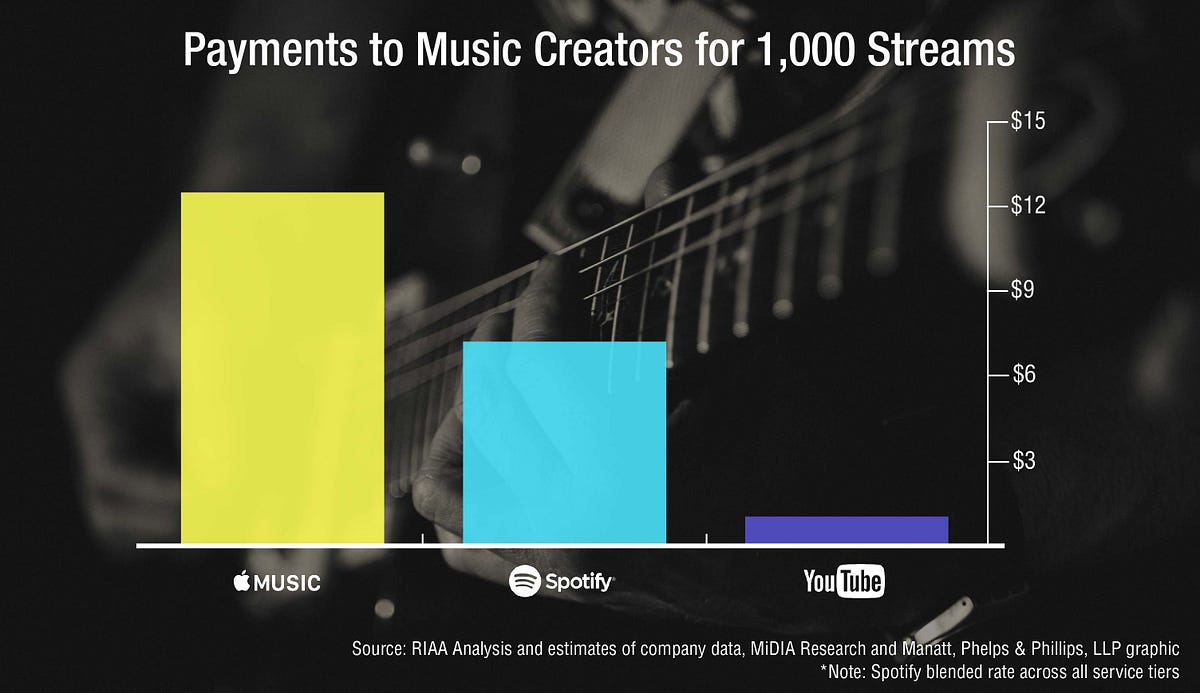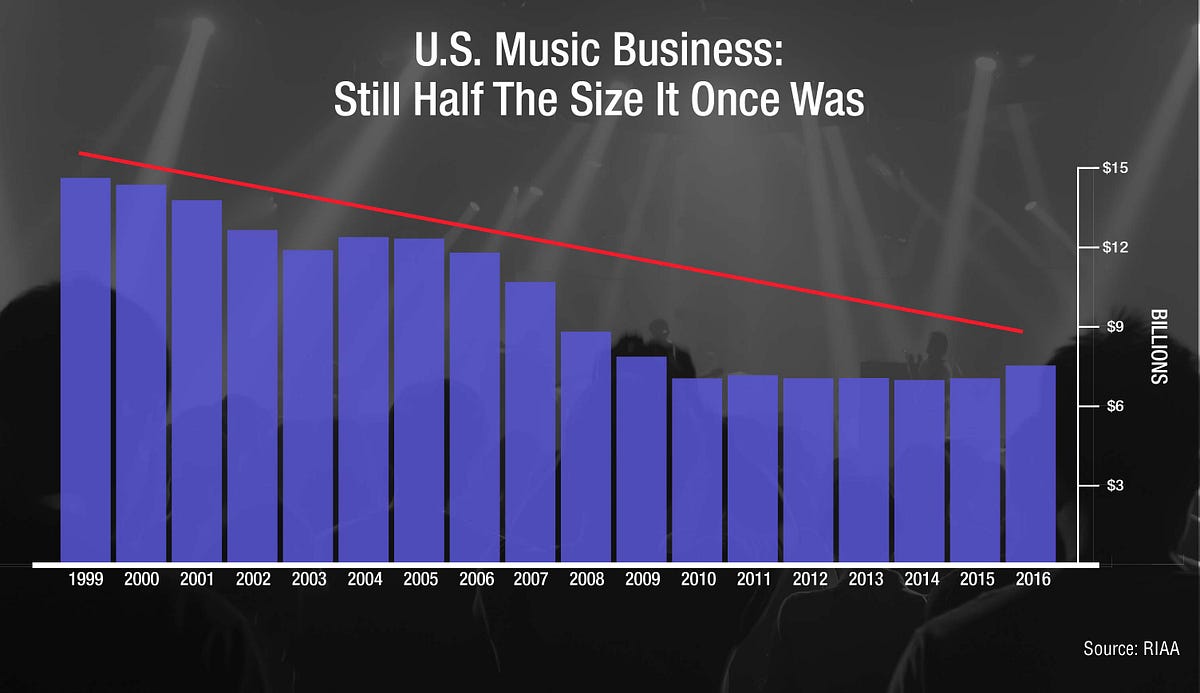Cary Sherman, RIAA Chairman and CEO, analyzes their new report showing how much the music business grew and advanced in 2016. But is also highlights how far it has to go; with streaming paying too little to artists and a music business operating at half the size it once was.
__________________________
Guest post by Cary Sherman, Chairman & CEO, RIAA
2016 was a year of significant progress for the American music business. Powered by 22 million subscriptions, streaming overtook all other formats, generating the majority of industry revenues for the first time. Overall retail revenues grew 11.4%.
My colleague Josh Friedlander walks through all the data in more detail here.
Our story is one of innovation, investment in great artists, hard work, and a relentless commitment to music. Look (and listen) around you — like never before, music surrounds us, it uplifts us, it narrates our big games and life’s major moments, it is who we follow on leading social media platforms. That does not happen by accident. It is partly the result of a tireless community of label entrepreneurs who approach each and every day with passion and conviction, both about music’s importance and the great artists who bring it to life. The music business, more than any other creative industry, is leading the digital transition.

As excited as we are about our growth in 2016, our recovery is fragile and fraught with risk. The marketplace is still evolving, and we’ve experienced unexpected turns too many times before. Moreover, two of the three pillars of the business — CDs and downloads — are declining rapidly. It remains to be seen whether growth of the remaining pillar will be sufficient to offset the losses from the other two. Much rides on a streaming market that must fairly recognize the enormous value of music.
The unfortunate reality is that we have achieved this modest success in spite of our current music licensing and copyright laws, not because of them. That’s not the way it should be. For example, it makes no sense that it takes a thousand on-demand streams of a song for creators to earn $1 on YouTube, while services like Apple and Spotify pay creators $7 or more for those same streams. Why does this happen? Because a platform like YouTube wrongly exploits legal loopholes to pay creators at rates well below the true value of music while other digital services — including many new and small innovators — cannot. It may be the same song requested by the user, on the same device, but the payouts differ enormously because of an unfair and out-of-date legal regime.

The analysis and research documenting a distorted marketplace continues to stack up. There’s this from MusicWatch’s Russ Crupnick a few months ago: “Thanks YouTube, But There’s Still A Value Gap.” Or just this week, the economic think tank Phoenix Center issued a new report finding that laws like the Digital Millennium Copyright Act (DMCA) cause music creators to lose anywhere between “$650 million to over one billion dollars a year” due to “distortions in licensing negotiations.”
The outrage over the outdated status quo continues to be shared by the entire music community. Sixteen music organizations (A2IM, AFM, AMA, CMPA, CMTA, GMR, Living Legends Foundation, MMF-US, NMPA, NSAI, Recording Academy, R&B Foundation, RIAA, SAG-AFTRA, SESAC, SoundExchange) representing artists, songwriters, record labels, publishers and more today launched www.ValueTheMusic.com, a new website to inform policymakers and fans throughout the world about laws enacted in the dial-up era that undermine the modern Internet music marketplace.
As we’ve long shown, music fuels the Internet. That’s why music is usually among the first content that any major technology firm’s consumer platform uses. Yet frequently we’re told that these corporate titans can do nothing more to better value and monetize music or reduce piracy. Surely these companies, with their brilliant engineers, can do better. The same goes for policymakers across the world. Government leaders can’t be satisfied with a dysfunctional and unsustainable status quo that devalues music.
Collectively, it feels like a rigged system that:
- leaves artists, songwriters and labels with little control over the monetization of their work;
- results in royalty rates that are tiny fractions of a penny per stream;
- threatens to undermine the potential for further growth from subscription services, which is what is powering the positive news about the business;
- imperils the $4.5 billion that record labels spend globally on discovering, investing in and promoting artists;
- jeopardizes the digital innovation and entrepreneurialism that’s revolutionizing music for consumers; and
- takes money directly out of the paychecks of thousands of artists and songwriters.
Only the powerful entrenched platforms win under these distorted rules and government loopholes that strangle the potential for more choice, more services and more experimentation.
A year of growth in the U.S. music business is welcome news. It suggests that years of patiently nurturing a nascent streaming marketplace has begun to pay off. But it does not erase 15 years of declines, or continuing uncertainty about the future.

Nor does it absolve the urgent need for policymakers to right a host of wrongs, or to ensure that music’s outsized contribution is fairly valued. On that front, there’s still a lot of work that needs to be done.